You searched for: 算力项目理财系统定制开发【TG电报:@EK7676】平台包网搭建算力项目理财系统定制开发【TG电报:@EK7676】平台包网搭建17Ca16yFfS
<< Previous | Displaying results 51-100 of 233 for "算力项目理财系统定制开发【TG电报:@EK7676】平台包网搭建算力项目理财系统定制开发【TG电报:@EK7676】平台包网搭建17Ca16yFfS" | Next >>
-
Auschwitz I camp, 1944
MapSelected Features 1. Camp Commandant's House 2. Main Guard House 3. Camp Administrative Office 4. Gestapo 5. Reception Building/Prisoner Registration 6. Kitchen 7. Gas Chamber and Crematorium 8. Storage Buildings and Workshops 9. Storage of Confiscated Belongings 10. Gravel Pit: Execution Site 11. Camp Orchestra Site 12. "Black Wall" Execution Site 13. Block 11: Punishment Bunker 14. Block 10: Medical Experiments 15. Gallows 16. Block Commander's Barracks 17. SS Hospital

-
Chaim Benzion Cale
ArticleChildren's diaries bear witness to some of the most heartbreaking events of the Holocaust. Learn about the diary and experiences of Chaim Benzion Cale.

-
German Administration of Poland
ArticleGermany invaded Poland on September 1, 1939. Learn about the administrative units that Germany established after annexing and occupying parts of prewar Poland.
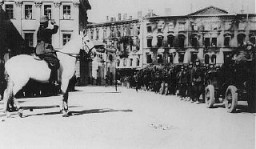
-
Capture of the Bridge at Remagen
ArticleCapturing the Ludendorff Bridge at Remagen was a major milestone for US forces in WWII, allowing the Allies to move troops and tanks across the Rhine river. Learn more.
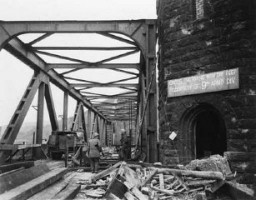
-
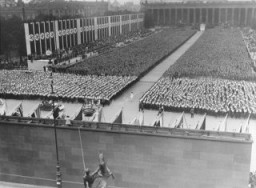
-
Subsequent Nuremberg Proceedings, Case #3: The Justice Case
ArticleThe Justice Case was Case #3 of 12 Subsequent Nuremberg Proceedings against leading German industrialists, military figures, SS perpetrators, and others.
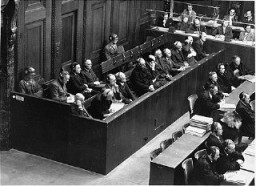
-
Subsequent Nuremberg Proceedings, Case #8, The RuSHA Case
ArticleThe RuSHA Case was Case #8 of 12 Subsequent Nuremberg Proceedings against leading German industrialists, military figures, SS perpetrators, and others.
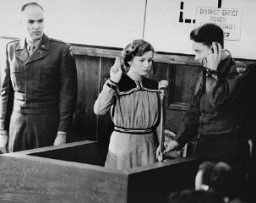
-
Subsequent Nuremberg Proceedings, Case #10: The Krupp Case
ArticleThe Krupp Case was Case #10 of 12 Subsequent Nuremberg Proceedings against leading German industrialists, military figures, SS perpetrators, and others.
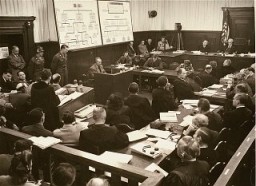
-
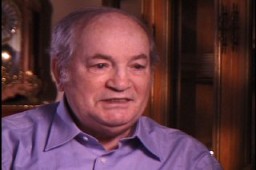
-
First Person Arrested Under ICC Warrant
Timeline EventMarch 17, 2006. On this date, Thomas Lubanga became the first person arrested under an International Criminal Court (ICC) warrant.
-
The 8th Armored Division during World War II
ArticleThe 8th Armored Division participated in major WWII campaigns and is recognized for liberating the Halberstadt-Zwieberge subcamp of Buchenwald in 1945.
-
Abdol Hossein Sardari (1895–1981)
ArticleIranian diplomat Abdol Hossein Sardari gave critical assistance to Iranian Jews in occupied France (1940-1944) to protect them from Nazi persecution.
-
David Morgensztern
ID CardThe second of four children, David, or Duvid as he was called by his family, was born to Jewish parents living 35 miles east of Warsaw in the small predominantly Jewish town of Kaluszyn. David's mother and grandmother ran a newspaper kiosk in town, and his father worked as a clerk in the town hall. David attended public elementary school. 1933-39: War has broken out between Poland and Germany. Many people are afraid of what might happen if the Germans occupy Poland and have decided to flee to the Soviet…
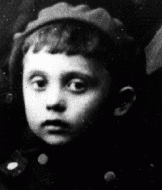
-
Hajj Amin al-Husayni
PhotoDuring World War II, the Nazi regime financed and facilitated anti-British and antisemitic broadcasts by the former Mufti of Jerusalem, Hajj Amin al-Husayni, an Arab nationalist and prominent Muslim religious leader, to mobilize support for Germany and the Axis among Muslims in the Balkans and the Middle East. At the close of the war, al-Husayni was arrested in the French occupation zone of Germany. After authorities moved him to France, al-Husayni fled to Egypt, where he continued to produce and…

-
Jakub Lapides
ArticleYoung people's diaries bear witness to some of the most heartbreaking experiences of the Holocaust. Learn about the diary and experiences of Jakub Lapides.
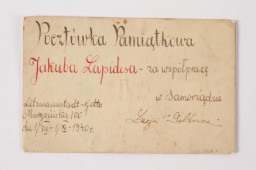
-
Trawniki: Key Dates
ArticleExplore a timeline of key events in the history of the Trawniki in German-occupied Poland.

-
Heinrich Himmler: Key Dates
ArticleHeinrich Himmler was the leader of the dreaded SS of the Nazi Party from 1929 until 1945. Learn more about key dates in the life of Heinrich Himmler.

-
Plight of Jewish Children
ArticleDuring the Holocaust, some children went into hiding to escape Nazi persecution. They faced constant fear, dilemmas, and danger.
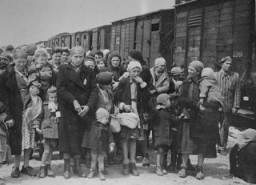
-
Voyage of the St. Louis
ArticleThe voyage of the St. Louis, a German ocean liner, dramatically highlights the difficulties faced by many people trying to escape Nazi terror. Learn more.

-
Subsequent Nuremberg Proceedings, Case #11: The Ministries Case
ArticleThe Ministries Case was Case #11 of 12 Subsequent Nuremberg Proceedings against leading German industrialists, military figures, SS perpetrators, and others.
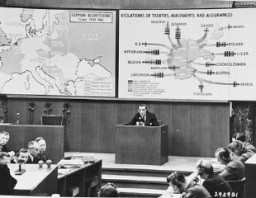
-
Charles Bedzow
ArticleRead the Jewish Partisan Educational Foundation's short biography of Charles Bedzow.
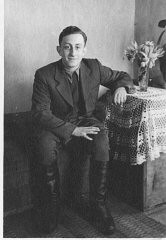
-
Solomon Lapidus
ArticleRead the Jewish Partisan Educational Foundation's short biography of Solomon Lapidus.
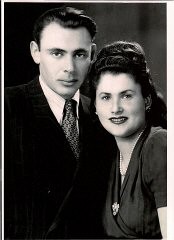
-
A group of Tunisian schoolgirls
PhotoA group of Tunisian schoolgirls wearing aprons. Nadia Cohen is in the first row, third from the left. Tunis, Tunisia, ca. 1930-1935. Nadia Cohen was born on January 17, 1924, in Tunis. Nadia's parents came from Orthodox households, but her father left the yeshiva at the age of seven to study Italian, Arabic, and accounting in a French school. In 1938, Nadia was sent to a boarding school in France. She returned home for a visit in the summer of 1939 but could not return to school that fall due to the…
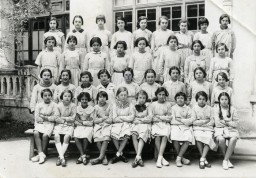
-
Bosnia
ArticleIn July 1995, Bosnian Serb forces killed as many as 8,000 Bosniaks from Srebrenica. It was the largest massacre in Europe since the Holocaust.
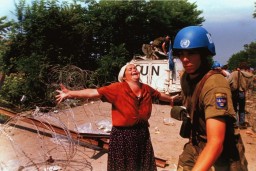
-
Mannschafts-Stammlager (Stalag) IX B
ArticleIn 1939, the Nazis established the Mannschafts-Stammlager (Stalag) IX B camp in Germany. Learn more about the camp’s history, prisoners, and liberation.
-
Hitler Youth
ArticleThe Hitler Youth and the League of German Girls were developed as Nazi Party youth groups to indoctrinate children and youth in Nazi ideology and policy.

-
Benjamin Frydmacher
ID CardBenjamin was born in the industrial city of Lublin to a large, Yiddish-speaking Jewish family. He attended public school, and after he graduated at the age of 14, he apprenticed at the same tannery where his father was the tannery master. 1933-39: After completing his apprenticeship, Benjamin became the assistant tannery master. After his father's death in 1938, he became the production tannery master. He and his wife, Gucia, lived with his mother at 50 Lubartowska Street. In 1938 the Frydmachers had a…
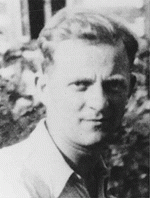
-
Rozia Susskind
ID CardRozia was born to a Jewish family in the town of Kolbuszowa. Her family lived outside of town, near her uncles. The Susskinds owned a flour mill and a lumber mill. Their home was one of the few in the area with electricity, which was generated at their mills. Rozia had an older sister, Hanka, and an older brother, Yanek. 1933-39: In the early 1930s, the Susskinds' mills burned down. Hanka moved to Cracow to study in the university and married, and Yanek was working in Kolbuszowa's Jewish bank. The…

-
Jacob Unger
ID CardJacob was living in Essen, Germany, when he met and married Erna Schumer, who, like him, came from a religious Jewish background. The couple had two children, Max, born in 1923 and Dora, born in 1925. Jacob worked as a salesman, and in the evenings he tutored students in Hebrew. 1933-39: In 1933 when Hitler came to power, Jacob went to Amsterdam to explore the possibility of the family moving there. However, Erna did not want to leave her three sisters who were living in Essen, and she also believed that…
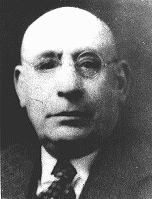
-
Willibald Wohlfahrt
ID CardWillibald was the youngest of six children born to Catholic parents in a village in the part of Austria known as Carinthia. Disillusioned with Catholicism, his father and mother became Jehovah's Witnesses when Willibald was an infant, and they raised their children in their new faith. His father became the leader of the local Jehovah's Witness congregation. 1933-39: Willibald lived in a beautiful area near lakes and mountains. The Wohlfahrts were active in Jehovah's Witness missionary work, even though…

-
Frederick Dermer
ID CardFrederick was born to a Jewish family in the Austrian capital of Vienna. His father died when he was a baby, and he and his mother moved into an apartment with Frederick's widowed grandfather. As a young boy, Frederick attended a Viennese public school. 1933-39: Frederick was a rambunctious child. Once, when his grandfather was baby-sitting, Frederick used a silk lampshade as a "parachute," and jumped from the top of the wardrobe closet. That was the last time Frederick's grandfather would baby-sit.…

-
Moise Gani
ID CardMoise's family were Romaniot Jews, a group that had lived in Greek cities and the Balkans for 1,100 years. In the early 1920s Moise's family moved to Italy, where his father tried to find work. Moise attended school, and when his family returned to Greece after two years, he remained in Italy to complete school. When Moise returned to Preveza at age 17, he had forgotten Greek. 1933-39: Moise worked as a bookkeeper and administrator at the local electric company in Preveza, and he lived with his parents.…
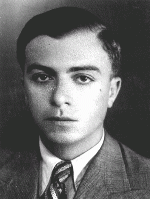
-
Wolf Wajsbrot
ID CardWhen Wolf was a young boy, his family moved to France to escape Poland's economic instability and growing antisemitism. Soon after they settled in Paris, his father found work in construction, and Wolf started elementary school. 1933-39: Paris was home to Wolf, but he loved to listen to his parents reminisce about autumns in Krasnik and journeys to Lublin. Hitler invaded Poland in 1939. The Wajsbrots learned of the death camps and mass deportations of Jews. Wolf's parents no longer spoke of the past. Wolf…
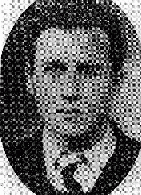
-
Jacob Gamper
ID CardJacob was born to a Jewish family in the Baltic seaport of Liepaja. He owned a clothing store in the city, and also owned some apartments, from which he collected rent. After his wife died, Jacob, who had retired, moved in with his daughter Sarah. 1933-39: Jacob was an avid reader. His favorite newspaper was Liepaja's German language daily, the Libauer Zeitung, which he liked to read in the garden and orchard around his daughter's home. On Sundays, "Grampa" would take his granddaughters Fanny and Jenny…
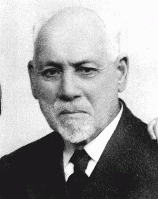
-
Rachel Lea Galperin
ID CardRachel, born Rachel Karpus, was born to a Jewish family in the northeastern Polish city of Vilna. At the age of 16, Rachel married Reuven Galperin, a typesetter for a Jewish newspaper in the city, and the couple subsequently had 16 children. Only nine of the children lived to the 1930s. 1933-39: In addition to caring for her children, Rachel also operated a small grocery on Nowigorod Street. In 1938 Rachel's husband died. One year later, on September 1, 1939, Germany invaded Poland and 17 days after that…
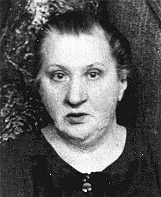
-
Eva Heyman
ID CardThe only child of a cosmopolitan Hungarian Jewish couple, Eva grew up in a city on the border between Romania and Hungary. Nearly one-fifth of the city's population was Jewish. Eva was a small child when her parents, Agi and Bela, divorced, and she went to live with her grandparents. 1933-39: After the divorce, Eva saw little of her mother, who remarried and moved to Budapest. She also rarely saw her father, who lived on the other side of the city. Eva lived with her grandmother and grandfather near the…
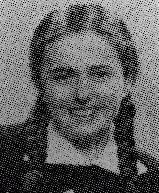
-
German-Soviet Pact
ArticleThe German-Soviet Pact paved the way for the joint invasion and occupation of Poland by Nazi Germany and the Soviet Union in September 1939.
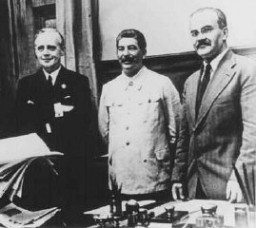
-
German military court trial of French resistance members
FilmFrance signed an armistice with Germany on June 22, 1940, recognizing the right of German authorities to oversee the French administration. Further, German military authorities held jurisdiction over matters of internal security. In this footage, a German military court in Paris tries French citizens charged with resisting measures of the military occupation. Despite harsh military justice, the Germans could not quell opposition in France, and resistance activities would reach a peak during the Allied…

-
Remilitarization of the Rhineland
FilmProvisions of the 1919 Treaty of Versailles forbade Germany (defeated in World War I) to station armed forces in a demilitarized zone in the Rhineland—a region in western Germany bordering France, Belgium, and part of the Netherlands. The treaty stipulated that Allied forces—including US troops—would occupy the region. In a blatant violation of the treaty, on March 7, 1936, Hitler ordered German troops to reoccupy the zone. Hitler gambled that the western powers would not intervene. His action…
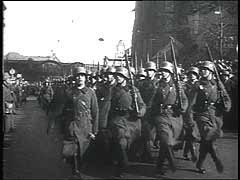
-
Marcelle Burakowski with her eight-year-old twin sisters, Berthe and Jenny
PhotoMarcelle Bock (born Marcelle Burakowski) was born in 1931. She was the oldest of three girls. She had twin sisters, two years younger than herself, named Berthe and Jenny. Her father worked as a tailor of men's overcoats. Marcelle is ten years old in this photograph. Her sisters are eight years old. Marcelle, her mother, and sisters were arrested during the roundup of July 16-17, 1942, and taken to the Vélodrome d'Hiver in Paris, France. Marcelle managed to escape during transit from…

-
SS: Key Dates
ArticleKey dates in the history of the SS (Schutzstaffel; Protection Squadrons), charged with the leadership of the “Final Solution,” the murder of European Jews.

-
Krakow Ghetto: Key Dates
ArticleExplore a timeline of key events during the history of the Krakow ghetto in German-occupied Poland.
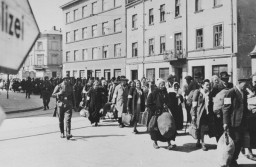
-
SS Police State
ArticleThe SS oversaw policing, intelligence, and the camp system in Nazi Germany. Learn more about the Schutzstaffel and its rise to power.
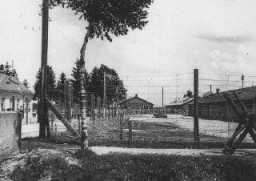
-
Kindertransport, 1938–40
ArticleKindertransport refers to a series of rescue efforts between 1938 and 1940 that brought thousands of refugee children to Great Britain from Nazi Germany.
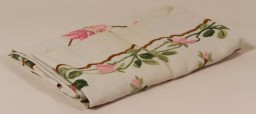
-

-
Return to Europe of the St. Louis
ArticleIn May 1939, the St. Louis set sail from Germany to Cuba. Most of the passengers, fleeing Nazi Germany, were denied entry. Learn more about their fates.
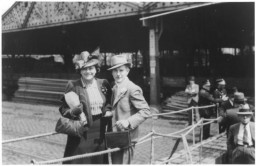
-
Polish Jewish Refugees in Lithuania: Unexpected Rescue, 1940–41
ArticleLearn more about the efforts of L.P.J. de Decker, Jan Zwartendijk, and Chiune Sugihara to help Polish Jewish refugees escape Lithuania during the war.
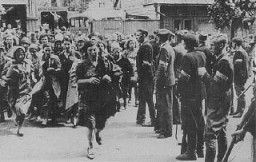
-
Locating the Victims
ArticleThe Germans and their collaborators used paper records and local knowledge to identify Jews to be rounded up or killed during the Holocaust.

-
Killing Center Revolts
ArticleUnder the most adverse conditions, prisoners initiated revolts in killing centers. Learn more about prisoner uprisings in Treblinka, Sobibor, and Auschwitz.
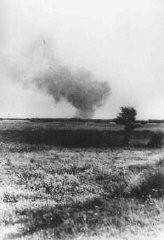
-
1938: Key Dates
ArticleExplore a timeline of key events in the history of Nazi Germany during 1938.

